Glenn Close has opinions about her face.
“Well, I have this theory,” she begins, playing with the dice from an ongoing backgammon game with Michael Xavier, her friend and Sunset Boulevard costar, while leaning back into the sofa in the greenroom at the Public Theater between performances in Mother of the Maid. On this December afternoon, she is still dressed in the headscarf and rough-hewn dress of her character, Isabelle Arc, the mother Joan of Arc, with legs covered in makeup to mimic the dirt of rough country living.
“It’s not a theory,” she quickly corrects herself, as her Havanese, Pip, settles himself close by. “I think it’s a fact: The great beauties all have small noses. And also big eyes. And I have a big nose and it's getting bigger.” She laughs before pulling on her chin and nose. “My jaw’s getting bigger...I’m gonna end up like Punch and Judy!” She laughs again, harder this time.
However you choose to characterize it, Close’s face has been a part of American cinematic culture for almost four decades now. She, and her performances, have been discussed and analyzed in classrooms and lecture halls across the world. She has generously bestowed upon the culture the phrase “bunny boiler,” brought to vivid life literary characters as disparate as Cruella de Vil — aka the greatest literary animal serial killer — in 101 Dalmatians (and its sequel), and Marquise Isabelle de Merteuil, in the 1988 adaptation of Laclos’ Les Liaisons dangereuses. Onstage, on television, and on the big screen, Close has frolicked in comedy and risen in tragedy, she has personified social commentary and illustrated the ever-shifting cultural landscape through playing mothers and wives, mistresses and queens (Danish and French varieties!), a butler, a CEO, a vice president, the first lady, and commander of the Marvel Cinematic Universe’s Nova Corps. (When I call some of the women she has played “unlikable,” she scoffs, promising archly, “Let’s go back to that.”) She was doing TV before movie stars began looking to the small screen for meaty roles. She produces (since 1991), and she writes — “I have a producing brain and I love writing,” she says. She is what the kids call “booked and busy.”
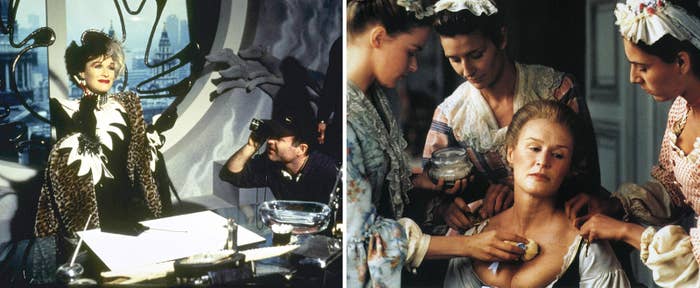
In the time since her first appearance onscreen in 1982, Close’s face has changed and evolved to reveal something new for each decade. Daniel Zelman, co-creator of Damages — for which Close won two Emmys and a Golden Globe as ruthless lawyer Patty Hewes — has said, “Glenn has the potential within one shot to have many different things wash over her face.” She is herself philosophical about her own visage. “My face depends totally on how well I'm lit and what angle they're shooting me,” she says. “Certainly in film. People come up to me all the time and they say” — she gasps theatrically — “‘You look so much better in life than you do in your movies!’ And I'm like, Is that a compliment? It’s incredible.” She giggles and places her hands in her lap. “So, I have a very uneven face.”
“People come up to me all the time and they say” — she gasps theatrically — “‘You look so much better in life than you do in your movies!’ And I'm like, Is that a compliment?”
And that face — made up of intelligent eyes, cheekbones that have only grown more striking with age, a mouth that can curl into cruelty both cartoonishly outsized and quietly understated, and eyebrows that observe and catalog everything — has been unavoidable this awards season. Thanks to her role as Joan Castleman, the titular wife in the screen version of Meg Wolitzer’s 2004 novel The Wife, adapted by the Emmy-winning screenwriter Jane Anderson and directed by Swedish director Björn Runge, she is a contender yet again.
A visibly shocked Close won the Golden Globe for Best Actress in a Motion Picture, Drama, earlier this year — one of many nominations and wins this season. She’s already won at both the Critics’ Choice Awards and the Hollywood Film Awards, and at the time of writing, has pending status on no fewer than six other nominations, including the BAFTA and Independent Spirit Award. On the day we spoke, she had just been nominated for a Screen Actors Guild award.
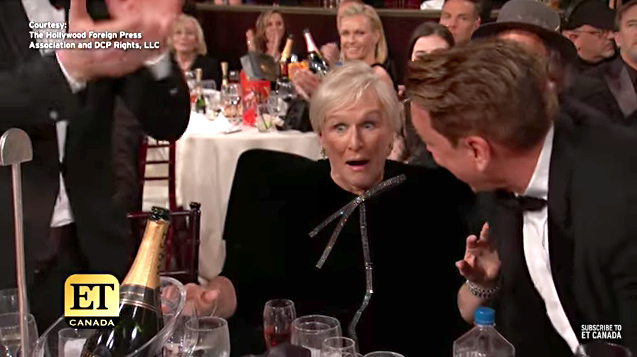
This latest round of praise adds to an already impressively stuffed accolade console. Count ’em: Tony (3), Obie (1), Emmy (3), Drama Desk (1), Satellite Awards (2), Screen Actors Guild (1), Golden Globe (2). And that’s only some of the well-known honors. This week she received her seventh Oscar nomination — no other living actor has so many times been a bridesmaid. She smiles mischievously when I bring it up. “I think a lot of people think I’ve won. I kinda wanna keep that record going,” she says with a gleam in her eye. “But you never know.”
An Oscar win couldn’t possibly cement her importance in popular culture any further, just as it would not further legitimize her towering talent across mediums. It would be right, though. If she wins the Oscar for her nuanced, careful, and mesmerizing work in The Wife, it will be somehow appropriate. In 2019, at the age of 71, and with no signs of stopping, Glenn Close deserves it all, because for so long she’s been doing it all.
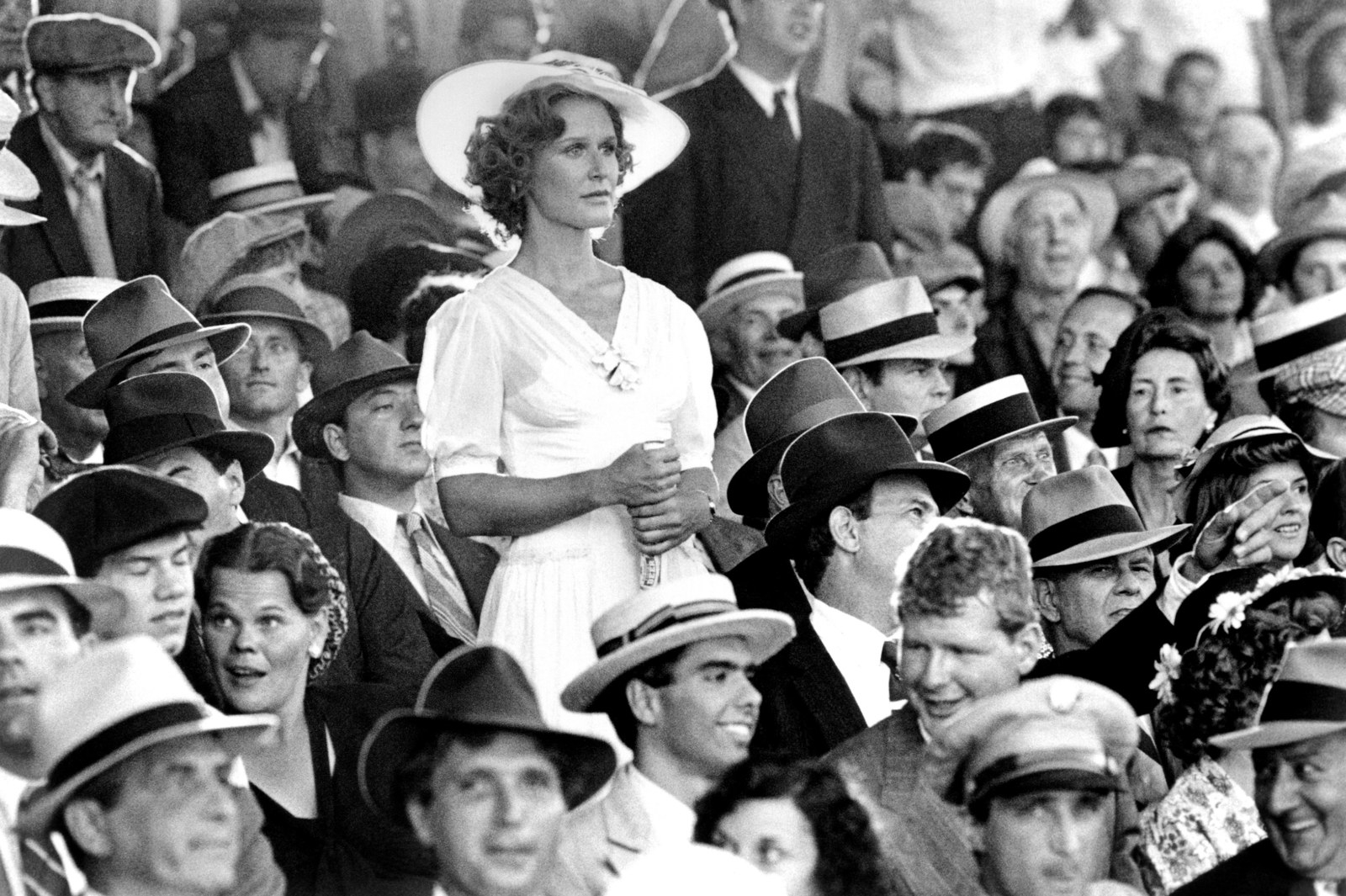
Close started her film career with a series of bangers. She was 35 when she made her debut in 1982’s The World According to Garp, and she was recognized by the Academy early, scoring three consecutive Oscar nominations for her first three film roles — Garp, The Big Chill (1983), and The Natural (1984) — in the category of best supporting actress. “I was too old to play the ingenue,” she says mildly. Interestingly, in all three of those early roles, she was playing mothers. Close was clearly — intentionally or not — a preternaturally smart picker of projects. Perhaps that ability was something honed over the years she spent in theater: Her professional theater career began in 1974 and, with TV, has remained an essential element of her work diet ever since. It’s the British style of performance, and Close admires it very much.
“I made [my career] that way,” she says. “The second thing I did after Garp was a thing for TV, Something About Amelia, which was about incest, and my agent at the time said, ‘It will ruin your film career.’ Because TV was very much the poor cousin. And I said, ‘It's a good piece of writing, I don't care.’ See, you have to be not so careful of your image. For me, I've always said, ‘[If] it's good writing, I wanna do it.’ What are you gonna do — take a shitty thing just to stay in the movies? No!” She cites Judi Dench as an inspiration on that front, asking if I knew the veteran British actor did a sitcom. I did know; she did two, in fact: A Fine Romance and As Time Goes By. “When she came backstage at Sunset, I was so moved. Because I really...she’s been one of my shining stars in doing everything.”
Of course, Close’s TV career is well-recorded now, both as an actor and a producer. She completed an Emmy-nominated arc on The Shield and has guest-starred on The Simpsons and Will & Grace. She’s executive produced on documentaries and TV films — and that’s before we get to her five-season powerhouse performance on Damages. But her most indelible work has been in cinema, from the iconic Alex Forrest in Fatal Attraction (1987) and Isabelle de Merteuil in Dangerous Liaisons (1988) to her more kid-friendly career as Cruella in Disney’s 101 Dalmatians (1996) and Kala in Tarzan (1999). In 2011, she cowrote, produced, and starred in Albert Nobbs, for which she was nominated for her sixth acting Academy Award nomination.
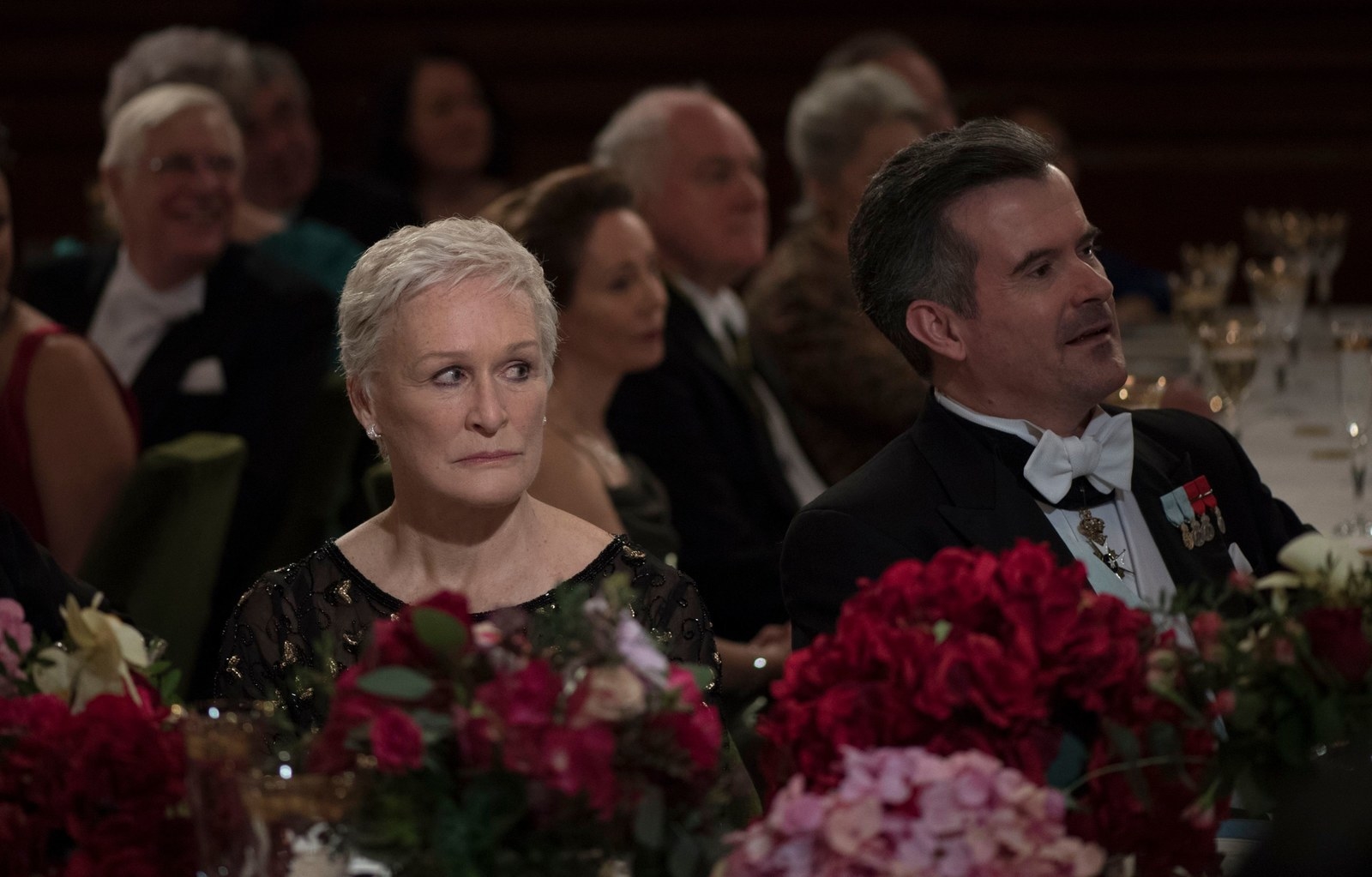
Her latest movie, The Wife, is a remarkably fitting 2019 story. It’s about a woman — a supremely talented woman — who abandons the path of literary glory in her own right and enters into a terrible compact with, and all in service of, her husband Joe’s (Jonathan Pryce) own writing career. It took 14 years and many stop-and-start cycles to get from page to screen, and the story of Joan Castleman — a woman for whom the burden of playing second fiddle finally got too heavy — is particularly resonant in this climate. Joan’s story feels intimately familiar to many women, not least Close herself. In her Golden Globes winner’s speech, Close held her award aloft and said tearfully, “I’m thinking of my mom, who really sublimated herself to my father her whole life, and in her eighties she said to me, ‘I feel I haven’t accomplished anything.’ And it was so…not right.” Her stirring speech drew a standing ovation, especially when she added, “We have to say: ‘I can do that’ and ‘I should be allowed to do that.’”
“I am, though it might not seem so, an introvert. I don't seek huge groups of people.”
Beyond her mother, though, Close found Joan in herself. She is quick to tell you she is not a Method actor but she empathized with her character. “I don't ever look in my own life,” she says firmly. “[But] I related to her. I am, though it might not seem so, an introvert. I don't seek huge groups of people.” And Joan is clearly introverted, whether by design or circumstance of their spousal agreement.
The question she set herself when she first read the script for the film was: Why would Joan stay in this lie, and this marriage? The answer came via a conversation with the screenwriter, Jane Anderson (who is also the playwright behind Mother of the Maid). The two met on the set of HBO’s Olive Kitteridge, which Anderson also adapted for the screen. “They gave us a trailer on the set and the two of us sat and talked,” says Anderson. “What's remarkable about Glenn is her deep intelligence about both forming a character and also looking at what possibly feels emotionally illogical [in a story and a script].”
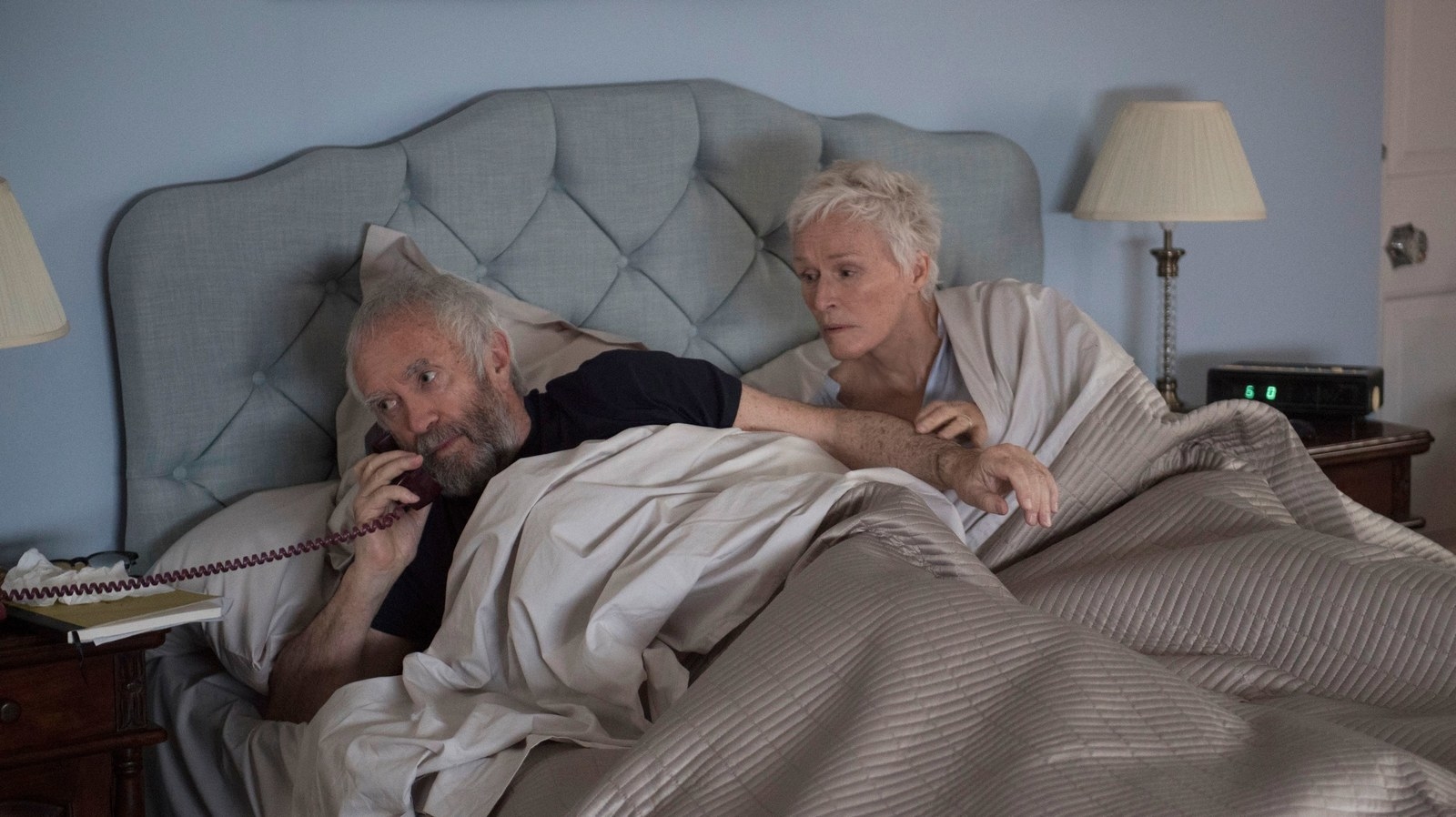
And so the two sat in that trailer for the afternoon and hashed it out. “She said to me, ‘Joan is shy,’ and you can see her playing that,” says Anderson. “We could sympathize and understand and not see her as a sellout but as someone who stayed under the radar because she needed to. She understands that a woman can be both extremely shy and extremely brilliant at the same time. Finally, she could wrap her head around the logic of the piece. And that's what gives this character depth.” In a London screening and Q&A when the film opened in August 2018, Close mentioned their close collaboration and disclosed that the script, which had one point employed voiceover, was rewritten three times.
Anderson and Close’s collaboration continued on Mother of the Maid, on which Anderson says the pair had “I’ll just say... beautiful creative arguments” over Isabelle Arc. “[Glenn] doesn't battle you, as a fellow creative. She challenges,” says Anderson around a laugh. “Us writers always fancy that our words are inerrant but we're not novelists; we bring on these other artists. And Glenn challenged me in a way that only made the scripts deeper and richer. She shakes up my notion of what I assume works. She's also very hard on herself, which most great artists are.” In particular, Anderson remembers the film’s climactic scene, in which Joan and Joe clash in their hotel room. “When we were rehearsing in Glasgow, Glenn asked that I keep exploring and rewriting that scene several times. It just got better every time.”
She praises Close’s (and her costar Jonathan Pryce’s) long theater careers for the scene’s textural weight. “Here’s the thing: Theater actors know how to explore and they are flexible enough to know that they can relearn a line to make a scene better. Stage actors know how to interpret a script,” she says. “And that’s part of Glenn's craft and brilliance. That she goes between stage and film is a part of what makes her one of the greats.”
Meg Wolitzer, the author of the book, is also a fan, particularly of the way Close turns Joan into a more interior character than her original first-person version, whose rage and humor we are never in doubt of. “In writing a first-person book, it was really Joan letting loose,” Wolitzer said over the phone. “The kind of restraint and everything bubbling beneath the surface that was part of Glenn's performance just seemed like, Oh, of course! She wasn't just taking the book, or even taking the script, and being dutiful — she gave it some kind of depth of thought that came out in a way that you couldn't take your eyes off her. I don’t know how [actors and screenwriters] do it — how she does it — but it's definitely profound in this case.”
Rage as a necessary and corrective force is in the news now, and Close acknowledges its usefulness, even though things are far from perfect.
For Close’s part, she worked out that Joan’s complicity in the larger lie is no great mystery: She loves Joe, and for the most part, the Castlemans’ arrangement simply wasn’t a bad deal for her. “She’s just fine, doing what she wanted to do, which was write. She got what she basically wanted,” she says. At that London Q&A, Close summarized Joan’s actions even more succinctly: “She finds a way to write, and to be read.”
Close certainly has an understanding of men like Joe Castleman, who are operating on a system of internal lack — men who do not understand that their worth is not bound up in what they (do or do not) achieve. “The thing that I love about that character and basically the fact that the last thing he asks her is ‘Do you love me?’ is that he does not love himself,” she says. “He’s never felt worthy and I think that has been his tragedy, really. Because he’s not the one with the golden touch, and he thinks that you have to achieve something like that in order to be loved.”
But really, it’s the rage of Joan Castleman that holds center. Joan is a woman who is told early by a (rightfully) bitter female mentor that women authors do not get taken seriously nor are they even read, and whose own life then bears that out. I ask Close if rage is a necessary tool to add complexity to a character. She expounds on a theory she’s been nursing for a while. “I’ve obviously not checked it out but I feel it personally, that any enduring piece of art has some quotient of rage involved.” Yes, but does she personally find that rage is an important component of the characters she’s drawn to?
She’s silent for a while before she answers. “It might be something I developed as trying to figure out why these women do what they do,” she says finally. “For example, [Damages’] Patty Hewes. I had this scene with my father on his deathbed, and you realized how abused she had been as a child, she and her mother. So what fueled her rage was abuse. That she’d never gotten help with, I don’t think.” She sits up as she warms to her subject. “You could say the same thing about Alex Forrest although she was much more out of control and in need of help. Certainly, the Marquise de Merteuil had a rage... where she saw how women could be used and ruined so easily by men, and she vowed that she would not let that happen to her. She was a brilliant woman, just behaving like a man: I'm not going to let you do to me what I've seen you to everyone else, no. She definitely was fueled by rage. I think it's something that I guess I do find attractive.”
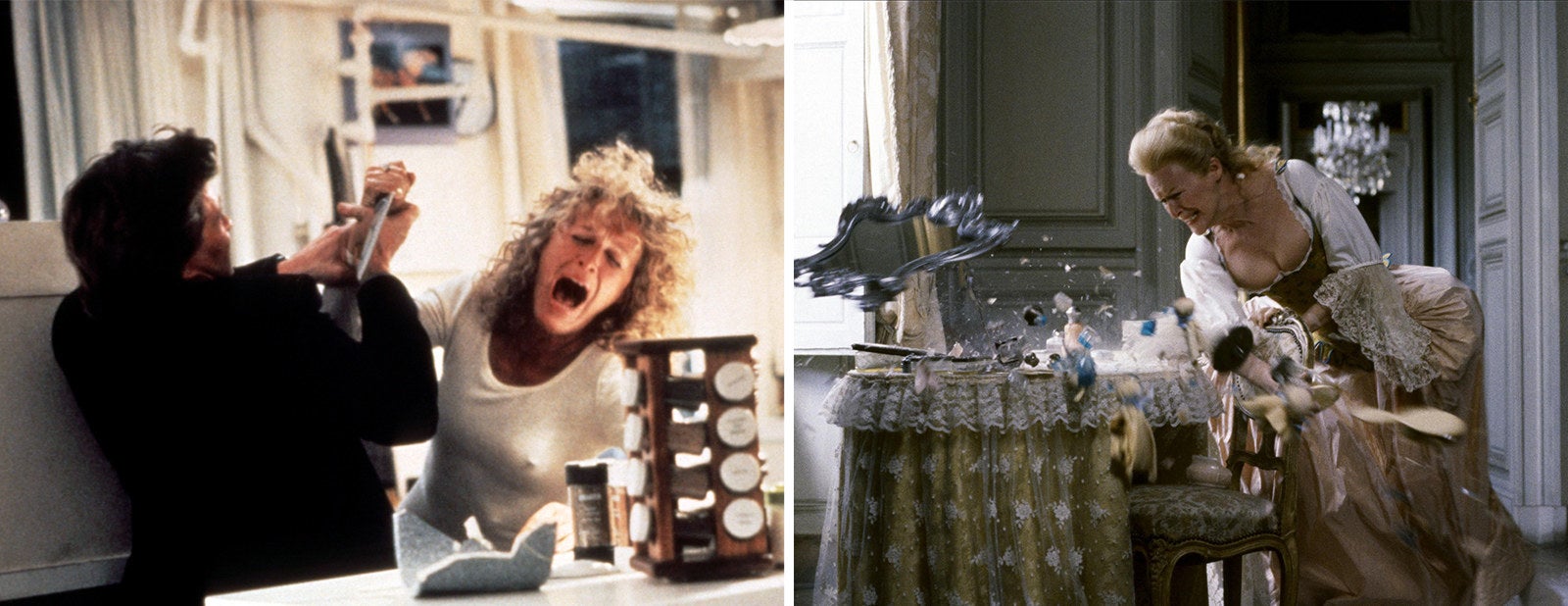
Even the character of Isabelle Arc in Mother of the Maid grows in righteous rage, taking on the institution that would so easily make a martyr of her teenage daughter. “I'd never played a peasant woman from the 15th century before, and that was an interesting exercise for me,” she says. “Her first line is ‘I’m Isabelle Arc, a God-fearing woman’ and one of her last lines is that she's not afraid — she talks to God directly, rages at him at will, and she's not afraid of him.” Isabelle Arc rose in her pain, and demanded change. “To me she’s like the peasant version of Richard the Lionheart's mom, Eleanor of Aquitaine. Both of them lived to be 80 years old. Isabelle went to plead for her daughter in front of the pope. Joan is one of the most analyzed saints ever [but] she is her mother's daughter.”
Rage as a necessary and corrective force is in the news now, and Close acknowledges its usefulness, even though things are far from perfect. “In some ways it’s more civilized now than it's ever been,” she says with a laugh. “Gosh. The best so far. You know when people say [of this current #MeToo moment], ‘Do you think it will last?,’ I really do believe that we're not gonna go back to what it was before.” She nods emphatically, and holds up an elegant forefinger. “But. In order to make it a permanent part of our culture, you have to have people who consciously make sure that that doesn't happen in their workplace, on their movie set, in their greenrooms, you know? It’s going to be active because it’s not anything that you can take for granted.”
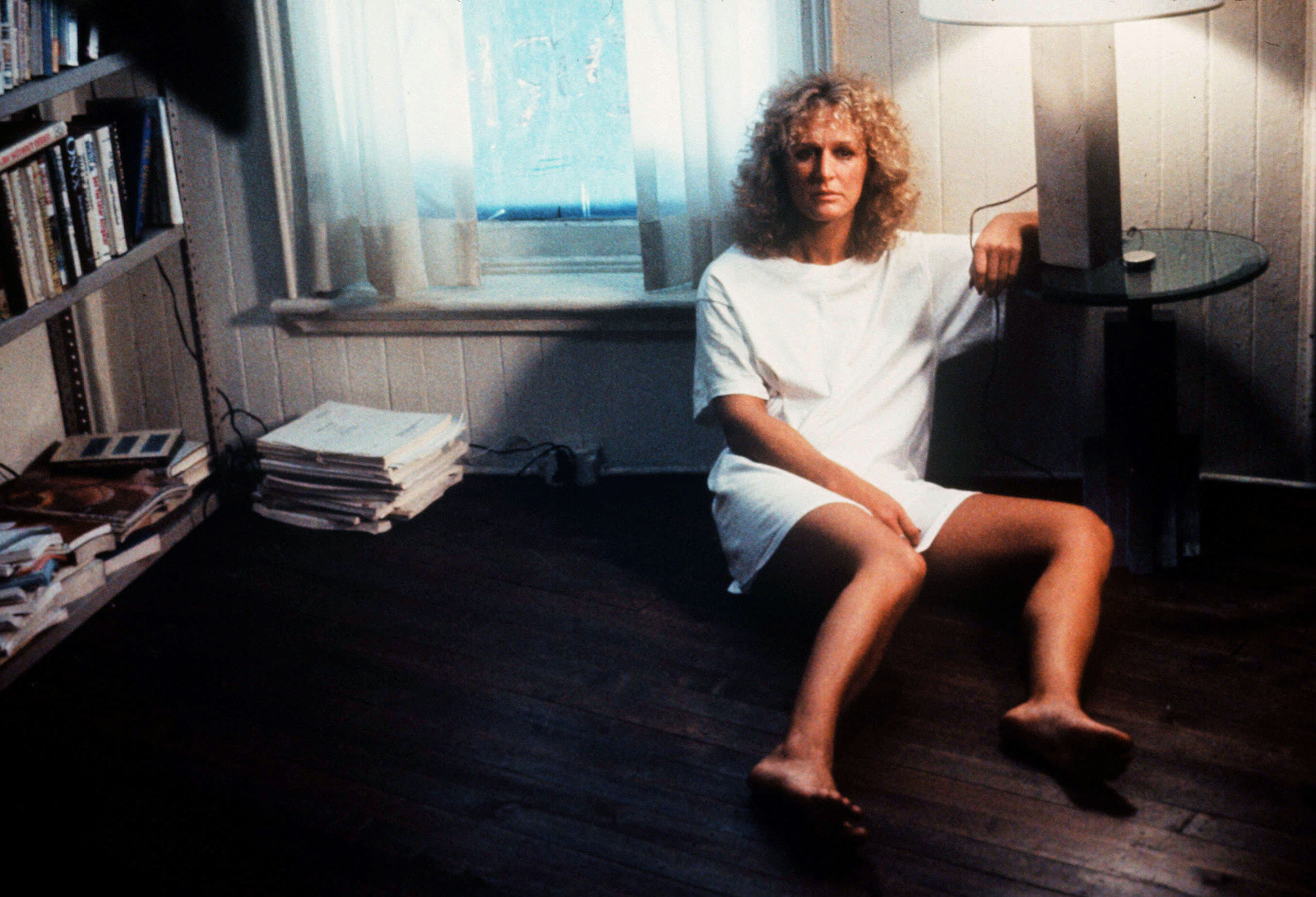
Close’s career has certainly not all been plain sailing. There is a still an edge to her voice when she talks about some of the feminist discourse that followed her performance in 1987’s Fatal Attraction. “I had such great empathy for [Alex] that it was shocking to me how people reacted to her. I probably should have known, you know? Feminists [said]: ‘How dare you do that to a single working woman?’ And I said, ‘Well, I’m not playing every single working woman. It’s a very specific character.’ You can't play a generality.” She still thinks of Alex as a victim of circumstances. “I’ve said before, but I think it’d be fascinating to tell the exact same story from her point of view. She’d then become a victim/heroine.”
The thing almost all of Close’s characters have in common is their ambiguity. She appears to revel in playing people who live and thrive in the shadowy gray. “She doesn't hurry to reassure the viewer,” explains Wolitzer, who has seen The Wife seven times so far. “She lets you wait in such a beautiful way.”
Wolitzer’s two favorite scenes from the movie showcase polar-opposite examples of Close’s skill. “I love when she goes out for a drink with Nathaniel Bone (Christian Slater), and the cigarette almost feels like the opposite of what a cigarette would do — she's taking in a kind of release,” says Wolitzer. “Air, from being with someone who is not her husband. She's just on a break, in a way. There's a pleasure in it. In [Joe’s] absence, something else is growing in her.” The other scene comes near the end of the film, when the couple’s unraveling is no longer subtext, and Joan gets to express her rage. “Her face is expressing just...years of this marriage. I think that's closest to almost seeing the emotions moving around in a circuit beneath the surface. She allows you a slight look into the circuitry and then you're confused — Wait, did I see that? Not everyone has a face that can do that.”
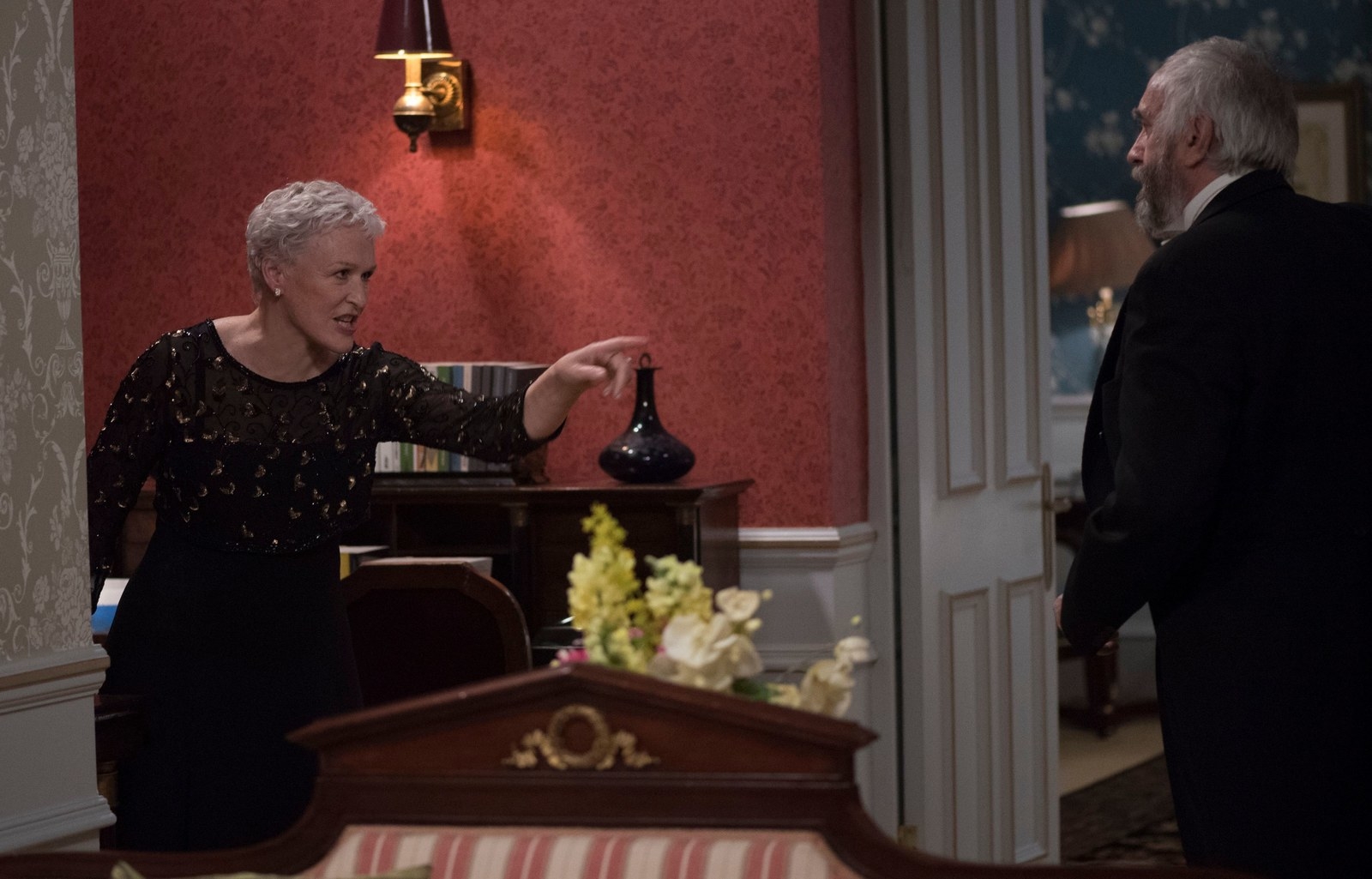
The magic of Glenn Close’s face being right there has not passed directors by; many have figured out to let her simply be, and the goods will come tumbling out. In that memorable scene from the Damages series finale, director Glenn Kessler lets the camera linger on Close’s face for 1 minute and 48 seconds as she declines, in a mesmerizing monologue, to grant forgiveness to her dying father (M. Emmet Walsh). Director Stephen Frears lingered on her face in the dying moments of Dangerous Liaisons, in a silent 77-second scene in which the marquise’s makeup is wiped away, along with layers of emotional armor, resulting in a final crumpling of her usually steely countenance.
Close has praised both her Wife director, Björn Runge, and cinematographer, Ulf Brantås, for “knowing where to put the camera.” In London, Runge described the process as “collecting emotional material.” Pryce joked they had renamed her “Glenn Close-up” on set. In the film’s pivotal opening scene, when the Castlemans get the call from the Nobel committee, the camera once again lingers on Close’s face as she listens in on the extension. It’s one of Anderson’s favorite scenes. “I see all the subtext that I either wrote into the script,” she says, “or didn't have to write into the script because she understood.”
In a piece for the Hollywood Reporter last December, Close opined on people’s reactions to her face over the years. She is herself not fazed by those feelings; after all, as she said in her Globes speech, this September will mark her 45th year as a working actress. For her, it has always been about the work: She intends to do more writing, and she wants to produce more, too, as she did on Albert Nobbs. The model of The Wife, with its unabashed focus on a woman, written and adapted by women, and coproduced by women, is one she enjoys. “I think there's definitely been a change, and I hope it becomes part of our culture,” she says. And for change to happen, she adds, “I think it will take people who have the clout to punch it through.” She applauds Regina King’s vow (and challenge) to make her productions a gender-balanced 50/50.
“You’re with remarkable women and they've done beautiful work. Have us all play the same role and then vote on it! But otherwise it does not mean anything.”
I ask her if she gets bored of being lauded during select award seasons. Her reply is an instant and comically shocked “No..?!” She understands how the game works, and plays her part happily, but adds vehemently, “I don't buy into winners and losers. I do not. The nomination in this is incredibly competitive, and you're lucky if you get a good piece of writing. People will say, ‘Oh, you don't really believe that…’ Yes, I do believe that!” There are Oscar roles, Close reckons, “and I think anybody who played them would get an Oscar for them,” she says, laughing. For the record, Close says: “I never in a million years thought that Joan Castleman would be an ‘Oscar role,’ because she's so not flashy.”
She’s been calling her conominees — Melissa McCarthy, Lady Gaga, and all the others — her “category sisters” all season. “You’re with remarkable women and they've done beautiful work,” she says. “Have us all play the same role and then vote on it! But otherwise it does not mean anything. I can’t get worked up about it. It's about the role.”
When I speak to her again, the day after the Oscar nominations have been announced, she is still sanguine about it all, and not just because she’s coming down with a cold. “It's incredibly gratifying. You know, after all these years, I think it has a lot to do not just with this part — it's basically kind of my body of work,” she says. Her joke about keeping her nonwinning streak notwithstanding, I want her to win this year. She goes quiet. “Oh, man. Yeah. It would be...something,” she says finally. “I mean, I think of my mom all the time. And you think of...the hidden gifts that so many women have. They just have to be allowed to have them.”
I tell her about how social media is loving her joyful awards season, and while she is blissfully ignorant of it all, she loves that people can see she’s genuinely just glad to be considered. “I mean, that's really the way I feel,” she says and laughs. When she and Lady Gaga tied for the Critics Choice award, she says, “I just thought, What's better than that? When you get to that level and [with] all the diversity of work this year it really is, to me, about the celebration of everybody's work. It's not just about one person.”
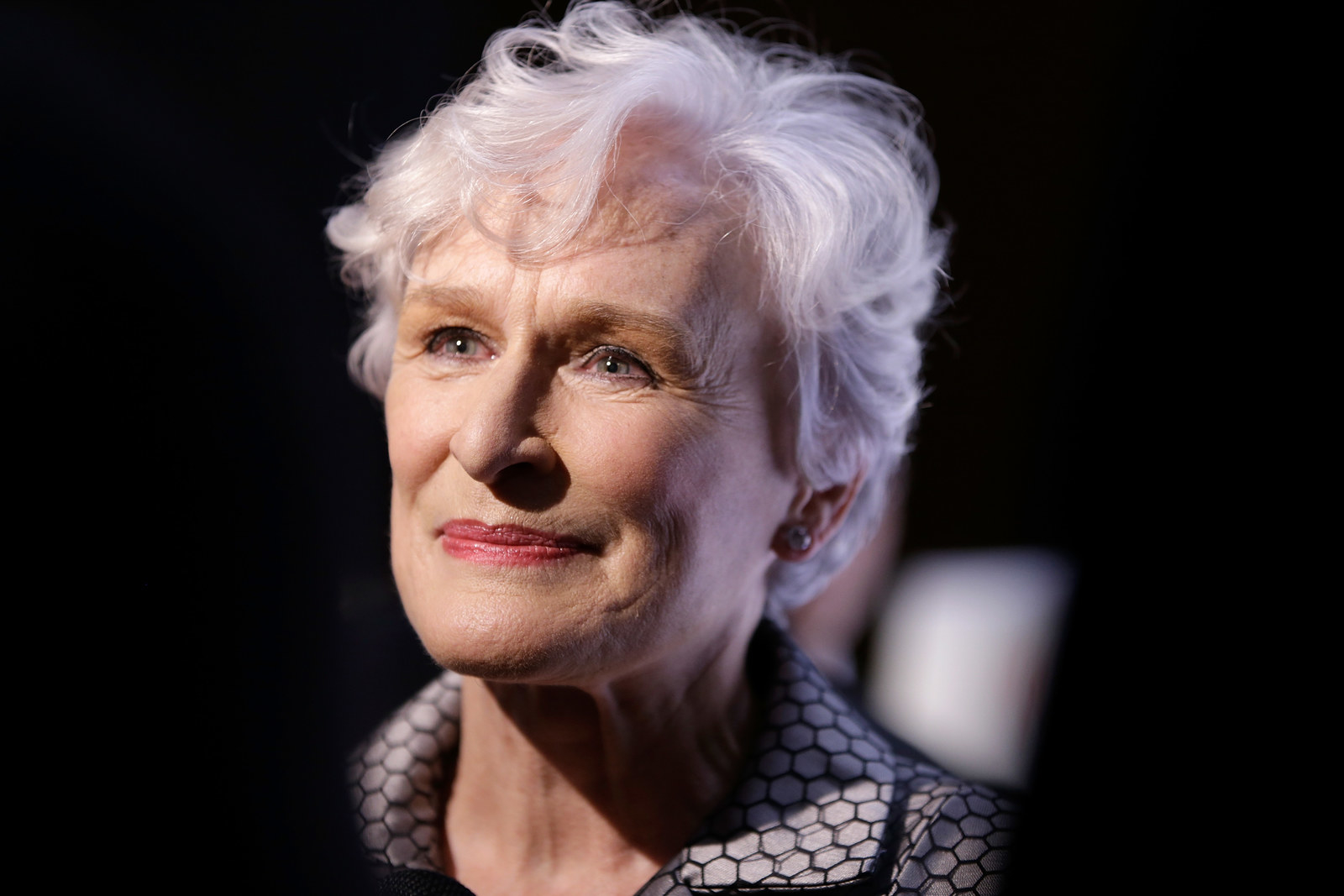
While she may not be bothered by the lack of the gold Oscar statuette (so far), Close perks up when I mention how it would bring her closer to EGOTing. “Oh, I would love that!” she says, with a soft clap. I ask her what she would like to win her Grammy for (she has been nominated three times previously).
“Well, I’m going to do, with Jazz at Lincoln Center, something in 2020 that Ted Nash and I are gonna write. [Artistic director] Wynton [Marsalis] said, ‘If you ever want to do something, just let us know, so I said OK.” She thought about something themed around women and war but decided against it, what with the national mood. “So I think now, our theme is going to be ‘transformation.’ And I want to do it with dance and spoken word, and I'm thinking I want to commission some great writers to write about transformation, or go back to something in literature. I think it would be incredible, and everything would be put to music.” Her enthusiasm is clear and catching.
When she speaks about work, serenity exudes from Close’s face: She is happiest when she’s the conduit for work that resonates with audiences. “I’m just grateful that at my age I'm still doing work that’s, you know, well-received,” she says. It’s not just a line — and it’s easy to believe, because, well, that face. ●
